Is the Customer Always Right? How to Handle
It When Customers are Wrong



In American culture, “The customer is always right” is a common expression. It’s more of a customer service ideology than a fact—because the customer can be definitively wrong.
But what happens then? How can businesses deliver a top tier customer experience when the customer is just not right?
Better yet, how can businesses avoid this awkwardness entirely?
Throughout this article, you’ll learn the origin story of the expression and why it simply doesn’t hold up. You’ll also learn how you can still provide a great customer service experience, even when the customer is wrong.
“The customer is always right” is an established cornerstone of many businesses dealing with customer service.
This phrase dates back to the early 1900s, when famous retailers and business owners like Harry Gordon Selfridge, John Wanamaker, and Marshall Field were pioneering a customer-centric strategy for their department stores.
The goal was to make customer satisfaction a high priority among their stores and encourage staff to always make sure every customer was happy.
While many believe the phrase was coined by Harry Gordon Selfridge, the first known instance of its use was in September 1905, when The Boston Globe attributed the quote to Marshall Field:
Every employee [sic], from cash boy up, is taught absolute respect for and compliance with the business principles which Mr. Field practices. Broadly speaking, Mr. Field adheres to the theory that “the customer is always right.” He must be a very untrustworthy trader to whom this concession is not granted.

Another particular favorite of Field’s was “Give the lady what she wants.” In Lloyd Wendt’s book about the retailer and his famous store Marshall Fields and Company, he detailed the origin story of this slogan:
Even those who could not always afford to buy what Field’s store offered appreciated the service and the elaborate courtesy. Many who made only one small purchase every six months came to consider the store a place where the customer was always right, and this became an unofficial maxim in these years. Another motto stemmed from an incident in which Field, while strolling through the store, came upon Lindsay T. Woodcock, assistant retail manager, speaking heatedly with a woman customer.
“What are you doing here?” asked Field.
“I am settling a complaint,” replied Woodcock.
“No, you’re not,” snapped Field. “Give the lady what she wants!”
Many other moguls of the era used slogans depicting the same sentiment. French hotelier César Ritz also had a favorite: “Le client n’a jamais tort” (“The customer is never wrong”).
These early retailers realized happy customers were returning customers, so they made it their stores’ mission to treat the customers as if they were always right. The approach made customers feel special, and the ideology has remained strong over a century later (for better or worse).
While this customer-centric ideology paved the way for early department store success, it’s become too complicated to hold up in 2023.
There are a number of reasons as to why this ideology is outdated and even harmful to businesses.
This thought process can be damaging to employee morale. When managers double down on their employees about helping customers no matter the cost (because “the customer is always right”) they’re essentially saying their employees have to deal with the repercussions. This is demoralizing and offers little to no support.
But this is how employees see it. And in 2023, two years after 2021’s Great Resignation, keeping employee morale high is more important than ever.
Historically, call center employees have had an attrition rate of 35-45%. But data shows that this number has skyrocketed to 87.6% since the COVID-19 pandemic.
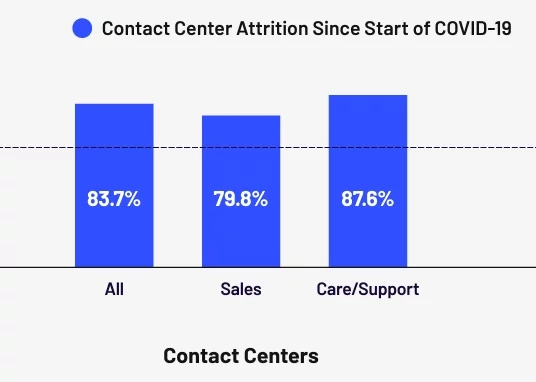
This comes as no surprise when we look at the data behind some of their customer interactions.
One US study found that 81% of customer service representatives deal with verbal abuse from customers, and 36% have received violent threats. 43% of customers even admitted to raising their voice when dealing with customer support.
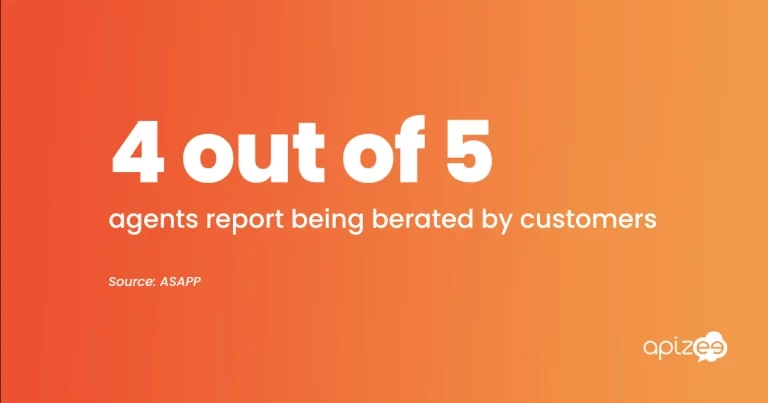
Saying that the customer is always right is costing businesses money. People are unhappy and they’re leaving.
Customers now know that they’re the ones in control of the Monopoly board. This type of “I’m always right” thinking perpetuates unrealistic expectations.
Many will push past your limits, at times demanding high-quality work within impossible timeframes, setting you up for failure.
However, we can surmise that, for most, the high demands that lead to this frustration stem from a place of general distrust (not just with your business, but with purchases in general).

The American consumer is already angry due to a decline in quality across the board from companies. CCMC’s National Customer Rage survey found that 74% of customers have had a problem with a product or service in the last year, up from 66% in 2020.
In addition, Forrester’s US 2022 Customer Experience Index reports that 19% of brands had a drop in customer experience quality, reverting back to pre-2020 levels.
When combined with findings from the American National Customer Rage Survey, the general consensus is that more people are angry at companies than ever—with 9% of consumers stating that they’ve sought revenge on a company by shaming them online.
Furthermore, the customer is not afraid to talk about their experiences. Social media is filled with anecdotes from your friends, family, and even celebrities.
People love to talk about a bad experience. In fact, there are entire forums dedicated to stories from customers, such as this subreddit with nearly 300,000 members called “r/Tales from the customer”:

Within this forum, perusers can read stories like this:
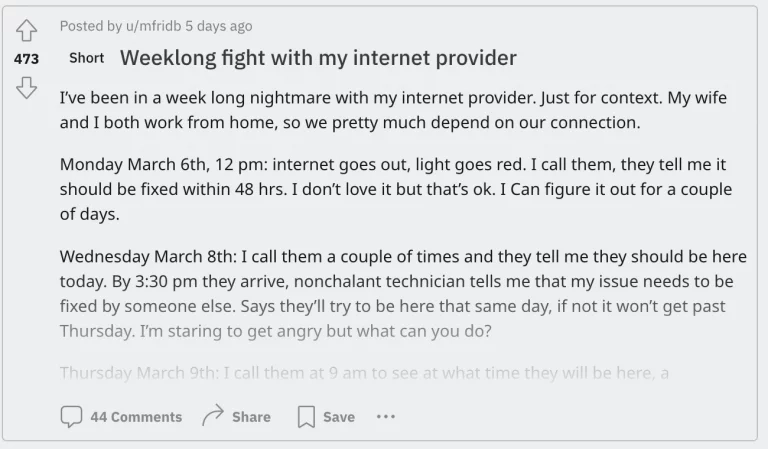
Many companies are named and shamed, with some stories more serious than others. But every story appears to generate a back and forth of intense comments.
One of the reasons that we’re faced with a never-satisfied customer is due to the treatment and service they get from retail giants like Apple and Amazon.
Those holding the largest market share have elevated the bar with things like next-day or same-day delivery, Genius bar support services on standby, and door-to-door tracking. Small to medium-sized businesses find it hard to keep up.
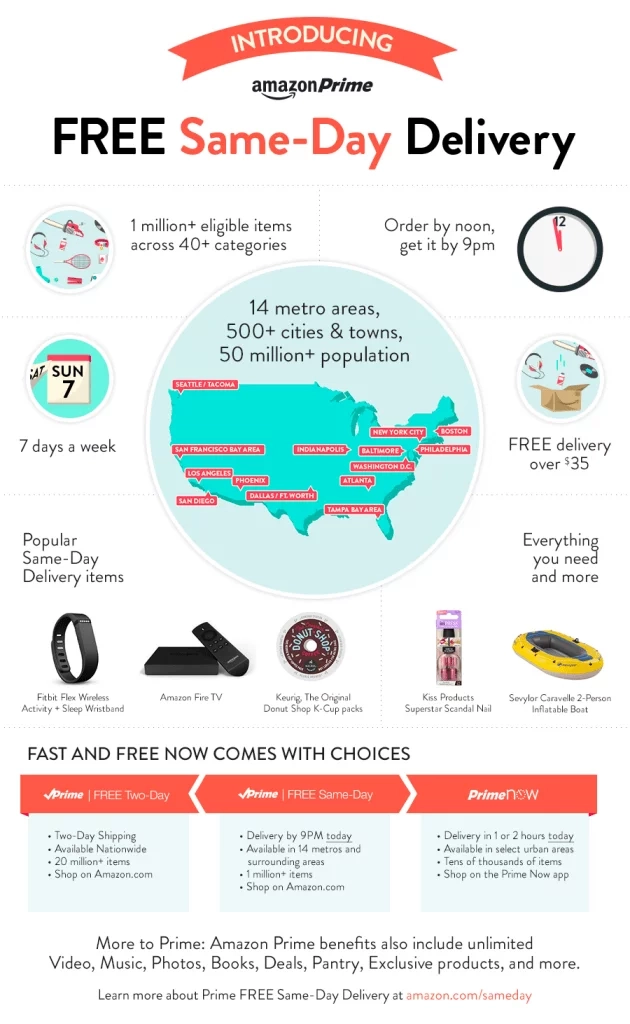
These businesses need to provide other solutions or competitive advantages when working with customers since “giving the lady what she wants” isn’t always attainable in these scenarios.
An often-overlooked reason as to why customers are not always right is that many companies have information the general public isn’t privy to. It’s not so much that the knowledge is particularly secretive, but rather, the average customer doesn’t have access to vast amounts of data.
Companies are constantly gaining insights into their customers’ preferences and behaviors. Successful companies utilize data in order to continuously improve the customer journey.
Skynova’s survey found that companies use customer data for a variety of beneficial purposes.
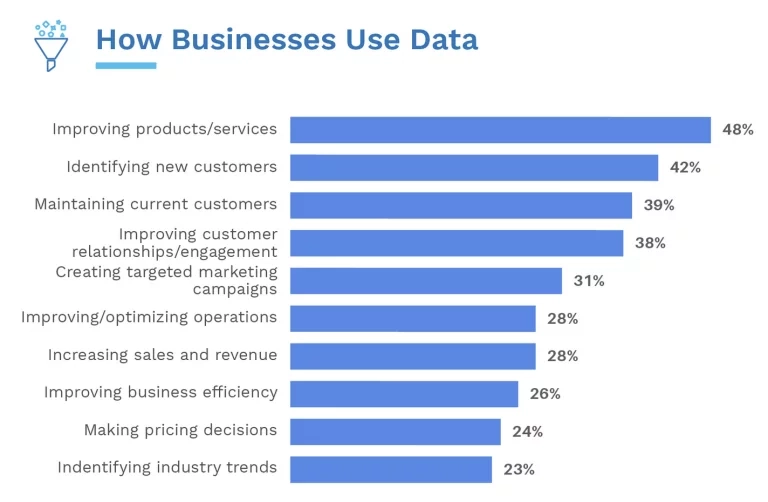
Customers aren’t always right because they’re seldom fully aware of why the company does what it does—and in the way that it does it.
Customers can be tough to please. Instead of expecting your employees to cave to all customer expectations and requests, operate with “the customer is sometimes wrong” as an ideology.
This way you can prepare for realistic situations to deliver great customer service and protect your business.
The best way to avoid dealing with this conundrum is to try to avoid the issues altogether. In other words, foster an environment that enables both sides to save face and reach success. Equip both your team and your customers with helpful tools and resources.
Set expectations early and clearly, such as drawing attention to your delivery times and return policy. This can be easily done before the sale with icons on product pages and you can reinforce those expectations by including the information again in the confirmation email.
Here are some ways you can provide a great service so that the customer never has to feel like they’re wrong (or need to argue with your call center staff).
Your employees are extremely valuable to your business. Ensuring your employees remain happy helps keep you in business and your customers satisfied.
Several studies have correlated happy employees with productivity and higher revenue, including a still-widely cited 2010 Gallup study and a more recent meta analysis by the London School of Economics.
Train and empower your employees to properly handle customer support issues. Help them identify when to step away and politely let a customer know when they’ve done everything they can to help them resolve their issue.
Companies are now using tools like sentiment analysis, which harnesses AI to give a reading on how customers are feeling based on biometric behaviors. These advanced tools can detect sarcasm, periods of cross talk (where people talk over the top of each other), changes in voice pitch, and more.
Tools like this can paint a data-based picture of how your employees’ calls are going, allowing employees to make the right call or for a manager to step in at the right time.
If you witness a conflict between an employee and a customer, it’s important to handle it carefully. Listen to the customer and learn how you can defuse the situation—but also get your employee’s perspective so you can intervene if the customer was in the wrong.
Certain customer interactions can be jarring for employees. Angry customers often lose their tempers, and when confrontation spills over into abusive territory, you want to empower your employees to act.
Train your employees on how to properly defuse situations, when to get management involved, and how to take time for themselves once the altercation has ended. Offering aftercare for employees can be another great tactic.
This can include keeping someone on staff for employees to talk to, offering mental health stipends, and providing proper support throughout the situation.
Help customers help themselves. Start by properly onboarding new customers: putting together training materials, offering a self-guided tutorial, and using email campaigns to walk new customers through various features.
Focus on creating additional self-service options to minimize the number of customer support requests and misinformed customers your team encounters.
Let’s walk through a few self-service options that might work for your business.
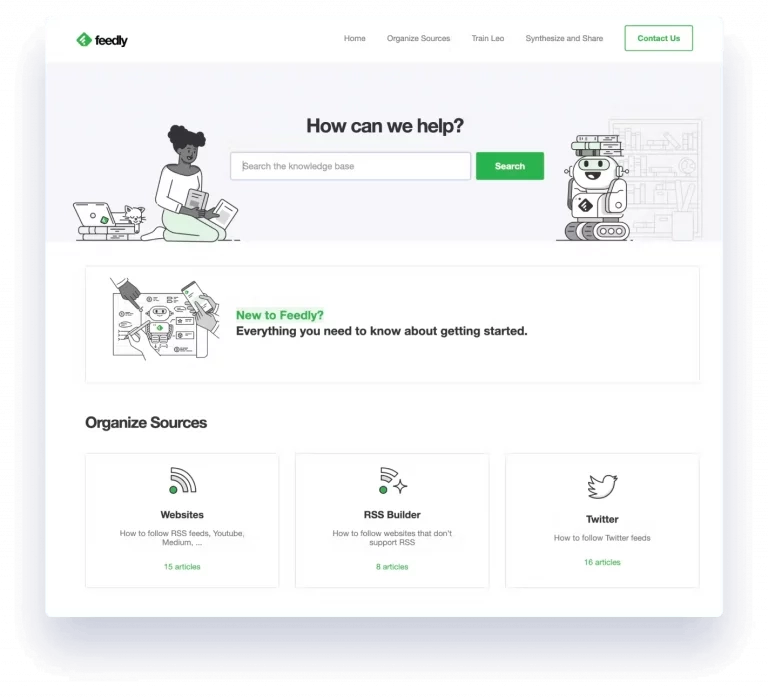
Source: Feedly
Create a knowledge base using software like Help Scout or Guru. This is a type of content management system (CMS) that allows your company to create help desk articles that walk your customers through every aspect of your product or service.
When you take advantage of a knowledge base software, you’re able to easily create and upload thousands of help center articles. These resources become searchable so your customers can find exactly what they’re looking for without needing to contact a support agent.
If you’re building and shipping out physical products, send out a paper product manual that customers can rely on for basic questions. Digital products and services can benefit from an online product manual.
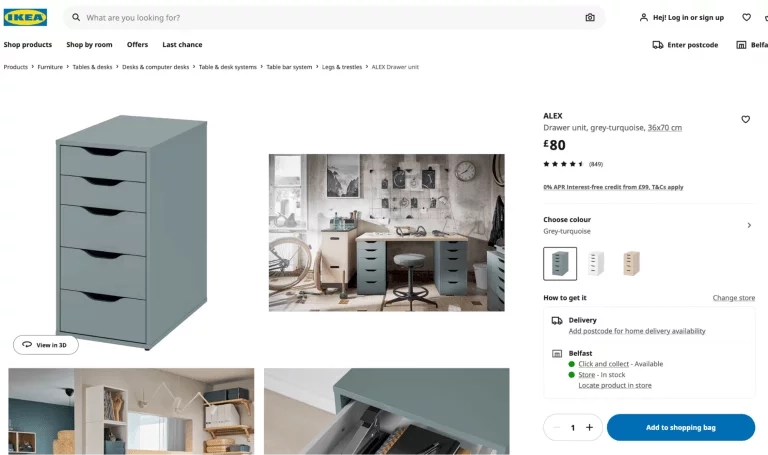
For instance, Ikea bridges the digital-analogue divide with their famously simple instruction manuals by offering them both in-store and online for all products.


Source: Intercom
Implement an AI-powered chatbot on your website with an app like Intercom or Infobip.
Chatbots have come a long way in recent times. They’re now far more conversational, harnessing the power of modern tools like ChatGPT to help customers help themselves and reduce customer support volume.
Not only will your customers appreciate the direct help that chatbots afford, but your contact centers will also be able to scale back on time and costs significantly.
Additionally, companies are using technology like “smart push” notifications to get in front of FAQs before they even become Qs.
For example, Smart Tribune helps sites boost conversions by up to 20% by anticipating needs and putting the answers in the right place.
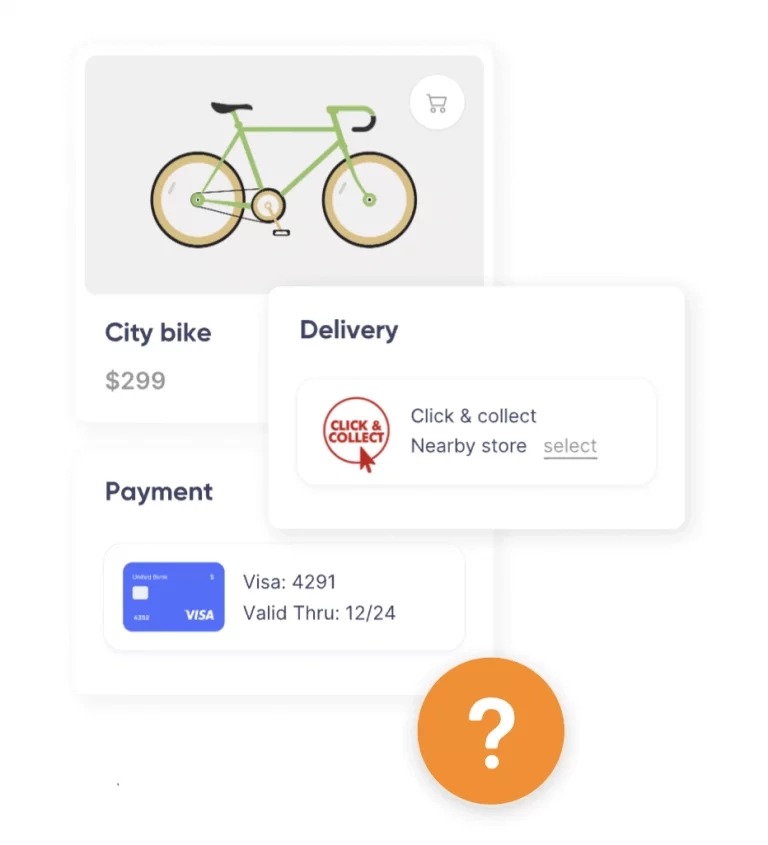
For example, this customer might be wondering if they’ll need to run to grab their credit card or if the website will accept auto-fill details. They may also be wondering if they will need to wait in for delivery or if they can pick it up on a day of their choosing.
Smart push and modern chatbots help customers help themselves in the most convenient way possible.

Source: Sprout Social
If your customers spend a lot of time on social media, you can use these platforms to offer customer support.
To make this easier for your reps, take advantage of social media management software that compiles all mentions and direct messages into a single social inbox, such as Sprout Social or SocialPilot.
These programs also help with collecting vast amounts of data that offer valuable insights for your contact centers, so when the time comes to interact with customers, your team will be even more prepared.
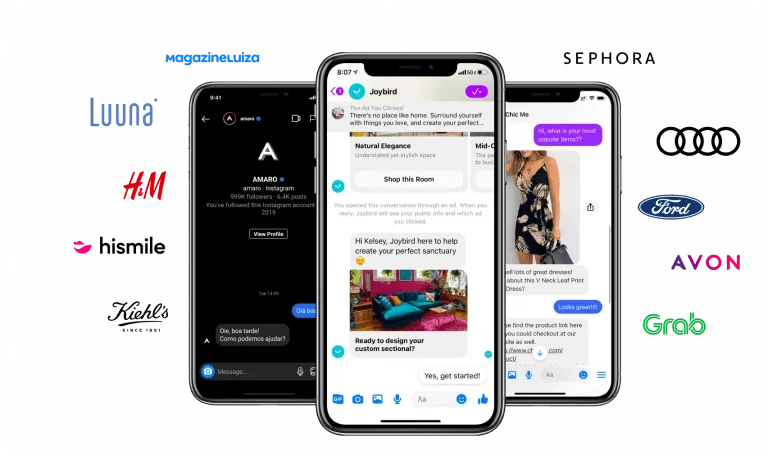
Source: Meta
Integrate your chatbot with Facebook Messenger to help customers complete basic transactions. Use a tool like Botsurfer or take advantage of Meta’s developer tools to create your own.
You want to offer multiple channels for your customers to reach you for assistance, and it’s important to make sure those channels properly connect. Offering omnichannel support helps your customers feel even more supported.
If your customer service team comes across an issue that needs to be escalated, they may determine a customer needs one-on-one support.
Offering one-on-one support helps your team deliver personalized guidance and develop empathy with your customers. By providing a human touch, unreasonable customers are more likely to behave, ensuring the interaction runs more smoothly.
But more than that, it helps all of your customers relate better to your business. Options for one-on-one support include phone calls, live chat, and video chat.
While all options are great, video chat is one of the best for building customer relationships. Giving your customers and employees a way to work together face-to-face, even remotely, goes the extra mile.
Apizee’s video assistance capabilities turn this into a reality. When customers reach out about issues, the person helping them over email or live chat can create a quick link to join a video call so the two can immediately work out the issue.

Retailer Fnac Darty brought their customer satisfaction rate to over 93% with each video assistance by implementing Apizee. Darty’s customer service center was also able to drastically minimimize the need for at-home intervention.
Video chat helps quickly deescalate unhappy customers, but you should still have parameters in place for when it doesn’t. Don’t require employees to sit face-to-face in a video call while they’re relentlessly berated.
The bottom line is that the customer isn’t always right, but they’re used to feeling that way. To compete on customer service without burning out your team, help customers help themselves.
Get in front of issues and then when problems do come up, train your staff on how to handle situations when the customer is wrong.
Apizee can help level up your customer support strategy. Learn more today.
Explore the top customer service trends for 2026—a quick look at what’s shaping customer expectations and behaviors in the year ahead.
Customer service: trends not to miss in 2026
8 Dec 2025
Here is the list of best Call Center Conferences to attend in 2026. Check out the top events, summits and meetups globally that you can plan for this year.
List of Best Call Center Conferences to Attend in 2026
1 Dec 2025
Best Customer Experience Conferences to Attend in 2026
1 Dec 2025
Interested in our solutions?